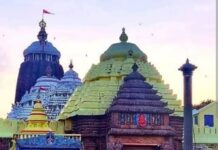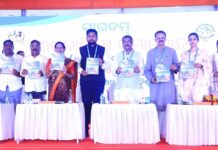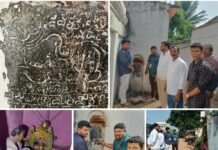
By Our Correspondent
NEW DELHI: Art Diversity 2024 is an effort to present two cultures and sets of people from India and Philippines. The artist from Philippines are part of the collective Angono Ateliers and Indian artists have been brought together under Arth Art International. In the first leg Indian artists visited Philippines and partook of the rich culture of the country. In Art Diversity 2024 artists from Philippines visit New Delhi India.
That it is an event that involves a smaller set of people and not heavily commercialised and without the involvement of large bodies and organisations enables a focus on the actual people and a genuine exchange.
The artists from Philippines are from the Angono Ateliers Association which was established in 1975 with the aim promoting the town of Angono as an artist village. Over the last forty-five years due to the sustained efforts and commitment of the Angono Ateliers Association, Angono has emerged as an art capital of Philippines.
Arth Art International from India provides a viable platform for such promotion of art across cultures. It is with the recognition that it is these efforts of genuinely committed artists and groups that enable genuine bridges of friendship, mutual respect and understanding between diverse cultures and people. Personal interactions and conversations instantiate an empathy and understanding of each other’s culture.
Glimpses of the local geographical and structural elements are transformed by the creative dexterity of the Filipino artists in their magnificent artworks. For instance, Stilt houses are indigenous to the culture of the Philippines. The local vignettes of the stilt house in the lowlands of the Philippines are given an artistic rendering in Bernardo Balagtas semi abstract titled Stilt House Scape.
Aaron Bautista’s semi abstract artwork Mejus 2 in mixed media where the vignettes of monochromatic streets or a couple or shadowed images peep out through an abstract grids and non-representational forms rendered in his ‘Geometric Linear Abstraction’ technique. Both the artists are remarkable in juxtaposing the elements of Filipino life with contemporary abstract techniques. The scapes also reveal the commonness of human pursuits of human life and perceptions.
The figurative paintings of Atoy Apostadero depicting a rural farm scene once again are joyful elucidations of the bonds of love and family. The paintings uniquely balance out warm and cool hues using secondary colours like pink, mauve to great effect. Aries Hernandez’s artworks evoke similar warmth of human relations. His artworks are stylized evocations of tenderness. The figures are placed in the flat foreground with perspectival illusion being created by his unique technique of transparent cubism, leading to the singular emphasis on the tender love and warmth. Don Miranda’s playful and endearing art rendered in acrylic conjure up magically the joys of childhood and the feeling of being home in its full emotional significance.
Dolpee Alcantara in his signature technique of ‘stylised pointillism’ depicts through his vibrant colour palette the tenderness of the mother’s lullaby in his artwork. The second artwork titles Prosperity is a recognition of the cultural significance of fish in Filipino lives. The milkfish or ‘Bangus’ is a symbol of pride and prosperity for the people of Philippines. The artist with great meticulousness and care in his brilliant pointillism has rendered this enthralling artwork.
August Santiago’s paintings of the female Filipino women in their various roles and works are infused with immense beauty and the lucid notes of a dream. The artworks carry the evocatively drawn females in concordance with nature the flora and fauna, lending to them the twin characteristics: the sheer magnetic beauty of the temptress and the magic of the mythical women as the givers and symbols of harmony and abundance.
That nature has been a muse to the entire human civilisation is evident from the artworks of Cecille Artillaga. Her paintings have the textures background with the flowers depicted in sharp focus in a photographic realist style. The brilliant use of colours and the textural elements and the sharpness of the edges lends a tactility to the artworks. It is as if the flowers have revealed their hidden secrets to the artist who has put it before the mesmerized viewer.
Keiye Miranda a third-generation artist from Philippines using enamel on wallpaper paints the poetry of the waves in her artwork Morning Waves. Her use of interior design media is indeed a vital link between the aesthetic and the functional aspects of art.
Rosalie Gonzales suffuses the canvas with mellifluous sensitivity perhaps because of her knowledge of flute the sweet notes of which she lovingly renders in her art. Her painting The Tongali Player is visually suggestive. It shows an indigenous Filipino female playing the nose flute in Kalinga Philippines. What is remarkable here is that the colours of the background are colours of the Indian flag, and the second artwork functions as the perfect complement to the first where the Bansuri player, bansuri being the Indian flute is set against the colours of the Philippines’ flag making them a most striking leitmotif of the cross-cultural exchange between the two countries.
The Indian artists also bring to the fore diverse and fascinatingly rendered creations. Like the exploration of nature and the natural topography in the artworks of Filipino artists Indian artists also imaginatively visualise various elements of their surroundings. Ritu Kamath’s canvas is an intricately intermeshing of nature and living beings. Shuvendu Sarkar in his suggestive artwork Story of Vanishing Wildlife.
Nitasha Jaini’s artwork City love creates with utmost skill, the patterned peripheral grid of the buildings and in the centre places human figures with flowers and in various dynamic postures, making the artwork an ingenious play of the utterly human palpability and the concrete tactility of the buildings. Krishnendu Porel’s abstact art is also based on his visual imaginative recreation of architecture around him as is Simmi Khanna’s visualisation of the Bazaar in Old Delhi
Anoop Kamath in his inimitable style creates the artwork Performer, with almost surreal Dali like undertones he creates a self-portrait rife with psychic energies. There are a variety of genres, Jasmine Kaur’s experimental viscosity printmaking, or Ashish Aroras, dramatic explorations of the human emotions, the psyche and the struggles of humanity.
Dr Ramesh Kandagiri’s metaphysical forays into the cosmogony of Shiva rendered in mixed media establish a dialectic between the everyday and the transcendental. As does Meenakshi Jha Banerjee in her own delicate technique which highlights the visages and amalgamates Mithila art in her own contemporary style.
The exhibition is indeed a song of humanity in its multifarious colours. The artists exemplify a love a rootedness to their own spaces and cultures but in doing so their art also elucidates that each feeling of tenderness, of family, of the concern for the planet or sacredness and beauty of nature are all the sweet notes which these artists render on their canvases. The bridges that such smaller little narratives build are those of a genuine appreciation of other cultures and ways of life as well as a recognition of the commonalities in cultures and human experiences of which we are all partake and which unites us all. There are 40 more upcoming and talented Indian artists who will be given a platform to exhibit their works in the exhibition.
Arth Art International is delighted to announce Art Diversity – 2024, an event celebrating cultural exchange through art, taking place in New Delhi, India, from April 20 to April 26, 2024. Organized by Arth Art International and curated by Jyoti A Kathpalia, the exhibition brings together talented artists from India and the Philippines. Held at The Stainless Gallery, the event showcases diverse cultural perspectives and artistic expressions.
Participating artists from the Philippines include Aaron Bautista, Aries Hernandez, Atoy Apostadero, August Santiago, Bernardo Balagtas, Cecille Artillaga, Dolpee Alcantara, Don Miranda, Keiye Miranda, Nemiranda, and Rosalie Gonzales. From India, artists such as Anoop Kamath, Ashish Arora, Jasmine Kaur, Krishnendu Porel, Meenakshi Jha, Nitasha Jaini, Dr. Ramesh Kandagiri, Ritu Kamath, and Shuvendu Sarkar will showcase their works. This event promises a captivating fusion of art and culture, inviting all to explore the rich diversity of artistic talent and heritage from both nations.





























